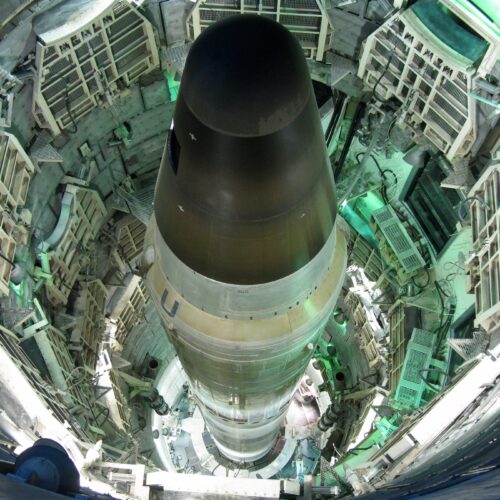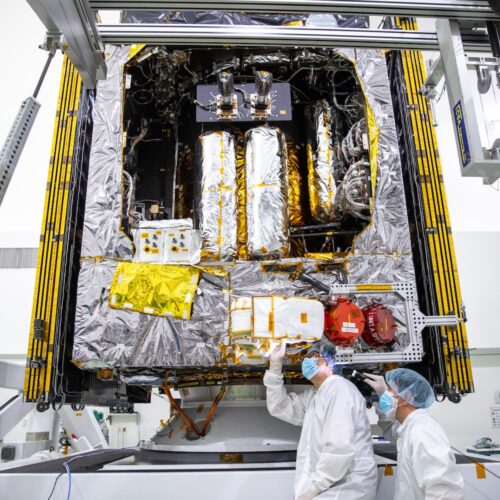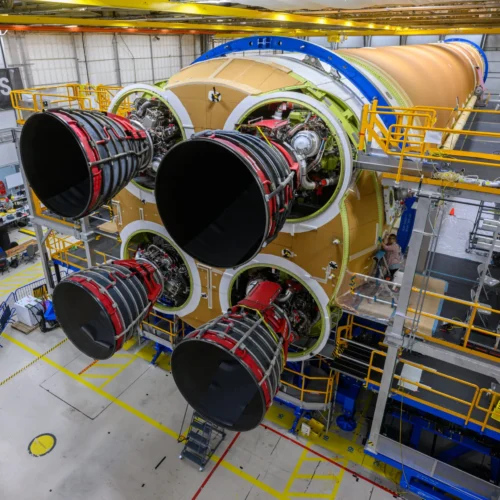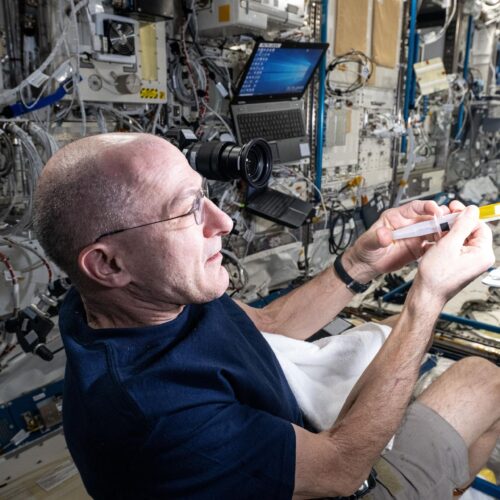26 Unidentified Bacterial Species Detected in NASA Cleanroom
Seven of the new strains were cultured during the assembly of the Phoenix mission that landed on the surface of Mars.

Welcome to Edition 7.43 of the Rocket Report! There's been a lot of recent news in hypersonic testing. We cover some of that in this week's newsletter, which is just a taste of the US military's appetite for fielding its own hypersonic weapons, and conversely, the Pentagon's emphasis on the detection and destruction of an enemy's hypersonic missiles. China has already declared its first hypersonic weapons operational, and Russia claims to have them, too. Now, the Pentagon is finally close to placing hypersonic missiles with combat units. Many US rocket companies believe the hypersonics sector is a lucrative business. Some companies have enough confidence in this emerging market—or lack of faith in the traditional space launch market—to pivot entirely toward hypersonics. I'm interested in seeing if their bets pay off.
As always, we welcome reader submissions. If you don't want to miss an issue, please subscribe using the box below (the form will not appear on AMP-enabled versions of the site). Each report will include information on small-, medium-, and heavy-lift rockets, as well as a quick look ahead at the next three launches on the calendar.

Stratolaunch tests reusable hypersonic rocket plane. Stratolaunch has finally found a use for the world's largest airplane. Twice in the last five months, the company launched a hypersonic vehicle over the Pacific Ocean, accelerated it to more than five times the speed of sound, and autonomously landed at Vandenberg Space Force Base in California, Ars reports. Stratolaunch used the same Talon-A vehicle for both flights, demonstrating its reusability, a characteristic that sets it apart from competitors. Zachary Krevor, Stratolaunch's president and CEO, said his team aims to ramp up to monthly flights by the end of the year.


President Donald Trump unveiled a budget blueprint last week that includes roughly $6 billion in federal funding cuts to the National Aeronautics and Space Administration (NASA).
Despite the multibillion-dollar slash, a senior official at the space agency told Fox New Digital that the reduction in funding is actually beneficial for efficiency and exploration.
"The reductions in the President's blueprint budget counterintuitively represent an opportunity to truly innovate in how we conduct our space missions," senior NASA official Ryan Whitley told Fox News Digital in an exclusive statement.
"Now is the time to reduce the bureaucracy at NASA and turn our attention to the execution of bold new human missions to the Moon and Mars."
HOUSE FREEDOM CAUCUS EMBRACES TRUMP BUDGET PROPOSAL 'PARADIGM SHIFT'
The proposed plan would cut roughly 24% of NASA’s entire budget, and could phase out some major projects like the Artemis moon program. Artemis, which was conceptualized by Trump in his first term, was designed to push the U.S. to return to moon exploration and came after President Barack Obama canceled the Constellation program in 2011.
The original timeline of the Artemis program included a mission to land astronauts on the moon by 2024 via the Space Launch System (SLS) rocket, but technical challenges have delayed the undertaking several years, and it is now set for at least September 2026 should the program survive the cuts.
While funding reduction threatens some existing programs, the White House touted new investments that would bolster the agency in an effort to beat Chinese space innovations.
TRUMP, GOP PUSH FOR MAJOR REDUCTION OF GOVERNMENT SPENDING IN NEW BUDGET PLAN
"By allocating over $7 billion for lunar exploration and introducing $1 billion in new investments for Mars-focused programs, it ensures that America’s human space exploration efforts remain unparalleled, innovative, and efficient," the White House topline preview reads. "To achieve these objectives, the Budget would streamline the NASA workforce, IT services, NASA Center operations, facility maintenance, and construction and environmental compliance activities."
Aligning with the Trump administration’s movement to improve government efficiency, the White House clarified that the budget "refocuses [NASA] funding on beating China back to the Moon and on putting the first human on Mars."
With a heavy reduction in federal funding, it is most likely that outside contractors and companies like Jeff Bezos’ Blue Origin and Elon Musk’s SpaceX will most likely play a bigger role in launching rockets and exploring space.
SpaceX has conducted 479 launches thus far, and Blue Origin has conducted 31.
As the current head of the Department of Government Efficiency (DOGE), though he has announced his intention of leaving the agency to focus more on Tesla and his other ventures, Musk clarified he had no involvement in NASA budget discussions in a post on X last month.
The budget blueprint and the funding changes to NASA still have to make their way through the legislative process, but the U.S. space agency has stood fast in its position that the current proposal will bolster innovation and exploration.
"We have accomplished the impossible time and time again, but even the best organizations need to take a hard look in the mirror," Whitley told Fox News Digital.
CLICK HERE TO GET THE FOX NEWS APP
"For the past 25 years, NASA has had access to billions of dollars to advance human exploration beyond Low Earth Orbit. Despite that, in all that time, the United States has only successfully conducted one—uncrewed—test flight around the Moon," he said. "We know we are capable of accomplishing much more."


The Trump administration has released a proposal to cut about a quarter of NASA’s 2026 budget, slashing both International Space Station crew sizes and the amount of research done there. At the same time, it sets up new funding that would likely benefit Elon Musk’s SpaceX by prioritizing human missions to Mars, and refocuses on “beating China back to the Moon.”
The suggested cuts are part of President Trump’s budget proposal for next year. It would slash $508 million from the ISS, cutting its crew size and focusing its “reduced research capacity … on efforts critical to the Moon and Mars exploration programs.” It also cuts $2.265 billion from space science missions, and includes terminating things like the Mars Sample Return mission, the objectives of which it says would be achieved by human flights to the red planet.
At the same time, the proposal offers $1 billion in spending on “Mars-focused programs,” with no specifics about where that money would go. As The New York Times writes, Musk’s SpaceX will “presumably” seek NASA funding to help with an uncrewed Starship flight to Mars that Musk has claimed will launch next year. Another $7 billion would be allocated to lunar exploration but suggests phasing out NASA’s SLS rocket and Orion capsule in favor of future commercial alternatives. It would end the Lunar Gateway program after the Artemis III mission, according to NASA.
The plan cuts $1.161 billion from earth sciences, eliminating funding for things like “low-priority climate monitoring satellites.” And it would slash $346 million in spending on “climate-focused ’green aviation’” in favor of air traffic control and defense spending, as well as $143 million in STEM engagement programs.
Russell Vought, director of the US Office of Management and Budget, sent President Trump’s budget proposal to the Senate Committee on Appropriations on Friday, writing that a “full fiscal plan” would follow. As Ars Technica notes, Congress will be responsible for actually writing the budget.
Casey Dreier, chief of space policy at space exploration advocate nonprofit Planetary Society, told The New York Times that the proposal is “the largest single-year cut to NASA in American history” and that it signals that “America is done leading the world in space, that we are a nation turning inward.”




NASA's Psyche spacecraft, located nearly 150 million miles from Earth on the way to an unexplored metal asteroid, has stopped firing its engines after detecting a problem in its propulsion system.
NASA published an update Tuesday revealing that the robotic spacecraft shut off its plasma thrusters earlier this month. The news wasn't widely shared until Wednesday, when NASA science chief Nicky Fox posted it on X.
"Engineers with NASA’s Psyche mission are working to determine what caused a recent decrease in fuel pressure in the spacecraft’s propulsion system," the agency said. The spacecraft detected the drop in pressure April 1 inside the line that feeds xenon fuel to the spacecraft's four plasma thrusters.


© NASA

A couple of weeks ago, ground teams at NASA's Kennedy Space Center in Florida removed one of the four main engines from the Space Launch System rocket slated to send four astronauts on a voyage around the Moon next year.
NASA officials ordered the removal of one of the massive rocket's RS-25 main engines after discovering a hydraulic leak on the engine's main oxidizer valve actuator, which controls the flow of super-cold liquid oxygen propellant into the engine's main combustion chamber, an agency spokesperson told Ars.
In its place, technicians installed another RS-25 engine from NASA's inventory to the bottom of the rocket's core stage, which is standing vertical on its mobile launch platform inside the cavernous Vehicle Assembly Building at Kennedy. Teams began integrating the replacement engine with the rocket last Friday and are in the process of firmly securing it in the Engine 4 position on the core stage, the NASA spokesperson said.


© NASA

The US Senate Commerce Committee on Wednesday advanced the nomination of private astronaut and businessman Jared Isaacman as the next administrator of NASA to the Senate floor, setting up the final step before he is confirmed.
The vote was not unanimous, at 19–9, with all of the nay votes coming from senators on the Democratic side of the aisle.
However, some key Democrats voted in favor of Isaacman, including the ranking member of the committee, Maria Cantwell, D-Wash. Before the vote, Cantwell said she appreciated that a candidate like Isaacman, with his background in business and private spaceflight, could bring new ideas and energy to the space agency.


© Inspiration4 / John Kraus

Not many people celebrate their birthday by burning a fiery arc through the atmosphere, pulling 4.4gs in freefall back to planet Earth, thudding into the ground, and emptying their stomach on the steppes of Kazakhstan.
No one has ever done it on their 70th birthday.
Perhaps this is appropriate because NASA astronaut Don Pettit is a singular individual. His birthday is April 20, and when the Soyuz spacecraft carrying him landed at dawn in Kazakhstan, the calendar had turned over to that date. John Glenn, then 77, was older when he went to space. But no one as old as Pettit had spent as long as he had in orbit, 220 days, on a mission.


© NASA

